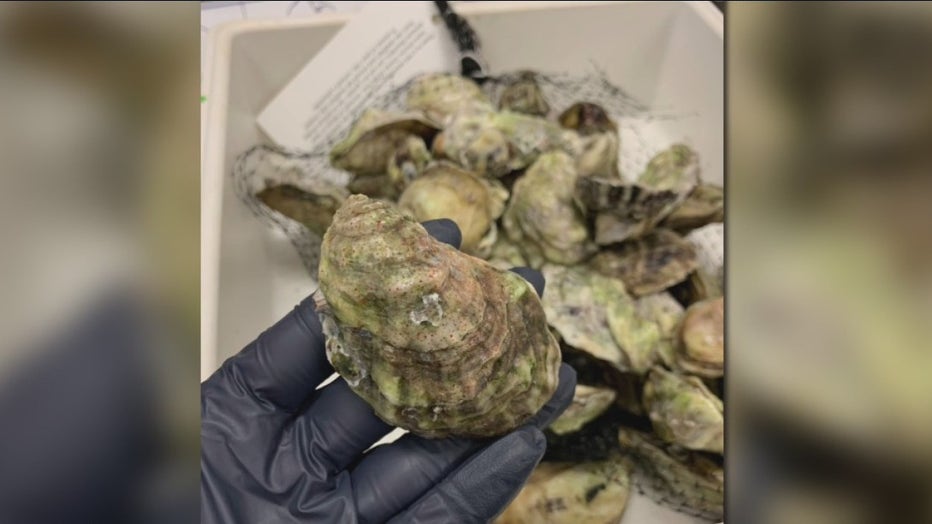New study finds oysters in Florida contain toxic forever chemicals
TAMPA, Fla. - A new study finds oysters in Florida contain toxic forever chemicals. Raising concerns about the effect the contaminants have on the people who eat them.
Researchers with Florida International University’s Institute of Environment sampled oysters in Biscayne Bay, Marco Island and in Tampa Bay. The scientists tested 156 oysters from the three sites, and detected toxic chemical contaminants — perfluoroalkyl and polyfluoroalkyl (PFAS) and phthalate esters (PAEs) — in every single one.
"Even though Biscayne Bay had the highest levels of contaminants, the oysters from Tampa Bay actually showed a higher level of free radicals," said Leila Lemos, FIU Distinguished Postdoctoral Scholar.
The mollusks sampled in the Tampa Bay came from an oyster farm. Researchers assessed the health risk we face by consuming these contaminated oysters, and by government standards, it was low. However, they point out many other chemicals were found, so the risk of exposure is likely higher.
"All of the other items we have been consuming, not only oysters, but fish, shrimp, lobster, all of the other things we ate and also other routes of exposure like drinking water," Lemos said.

According to the EPA, these chemicals are known to cause risks to human health, and finding them in the oysters means they are in the water, and have crept into the food chain.
"There's a larger picture here where it's not just the individual oyster. They may have the chemicals, but we want the bay to be clean," said Richard Radigan, Oyster Shell Program Coordinator at Tampa Bay Watch.
Oysters are a crucial keystone species, and are among the best sentinels. The mollusks can reveal a lot about the overall health of an ecosystem.
"One of the really important things about oysters is they serve as filters. They are filter feeders," Radigan said. "A large adult oyster, we kind of say they can filter up to 50-gallons of water a day."
How the oyster is doing or what is found in the oyster, like the toxic contaminants, is a reflection of the water quality. Now that we know these chemicals are getting into the bay, Radigan and the researchers from FIU say more needs to be done.
"Looking at these oysters and finding out where these sources may be, and maybe possibly we can kind of try to mitigate that and limit the amount of harmful substances that are entering into our waterways," said Radigan.
He and the researchers also stressed how important it is to know what we are putting into our bodies, where the shellfish we eat comes from, and what the water there is like.

